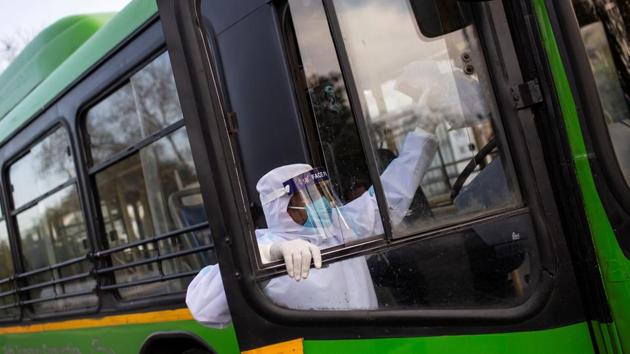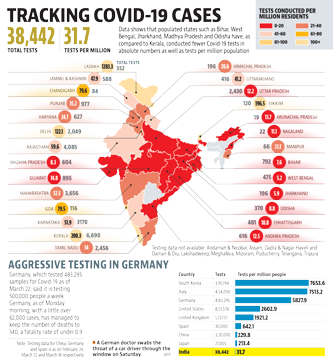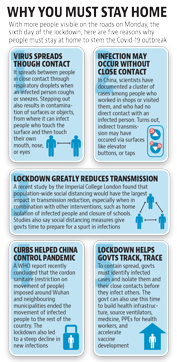Covid-19 community transmission debate continues
In Stage 3, the source of a patient’s infection cannot be traced and isolated.
The Union health ministry clarified on Monday that community transmission of Covid-19 hadn’t yet begun in India, a day after signalling the onset of “limited community transmission” of the disease. The ministry said limited community transmission isn’s the same as community transmission -- Stage 3 of infectious diseases such as the one caused by the SARS-Cov-2 virus.

“Limited community transmission means where a more than one person has acquired, directly or indirectly, infection from the same source. Community transmission of alarming proportions has not been seen in India yet. There is nothing to hide...if we get evidence of large-scale community transmission, where the source of transmission is not known, we will declare it. As of now there’s no community transmission in India,” said Lav Aggarwal, joint secretary in the health ministry.
Later, India’s health minister Dr Harsh Vardhan tweeted: “Today, related to #CoronaVirus, the @MoHFW_India (ministry of health and family welfare) made it clear that its spread has not reached the community transmission level yet and its transmission is still in the local phase. “
In Stage 3, the source of a patient’s infection cannot be traced and isolated.
India has reported 1,308 cases and 32 deaths due to Covid-19. On Monday, 25 new cases were identified in Delhi, of which 18 cases were in one cluster, Nizamuddin.
Click here for the complete coverage of the Covid-19 pandemic
There are four main stages of the disease outbreak. Stage 1 is usually when cases are imported and are not of local origin. Stage 2 is when there is local transmission, which means a section of people testing positive have come in contact with a positive patient having a travel history. Stage 3 is community transmission. Stage 4 is an epidemic.
The Indian Council of Medical Research (ICMR), tasked with containing the pandemic, has maintained that India is still in Stage 2, despite the number of cases of people with no known contact with an infected person or travel history rising over the past week.

Community transmission happens when the source of infection is untraced and the patient has no travel history or known contact with a confirmed Covid-19 case. It indicates that undiagnosed cases are infecting others, which is when infection clusters spiral out of control and turn into epidemics.
A senior public health expert, who spoke on the condition of anonymity, said: “We’ve had pockets of community transmission in several locations in half-a-dozen states, but now the number of people with untraceable infection is increasing, which is a sign that community transmission has begun.”
According to T Jacob John, head of the department of clinical virology and microbiology at Christian Medical College, Vellore, community transmission in India began in mid-February.

“Instead of splitting hairs, the focus should be on preparing to be three steps ahead of the virus. It’s not a cops and robbers game, we should not be fooled into reacting to the virus but should be fooling the virus by anticipating the curve and proactively deciding what we need to do stop the spread,” said John, emeritus medical scientist, ICMR.
The US Centers for Disease Control (USCDC) declared its first case of a person in California with no relevant travel history or exposure to another known patient asa “possible instance of community spread of Covid-19 in the United States” on February 26.






